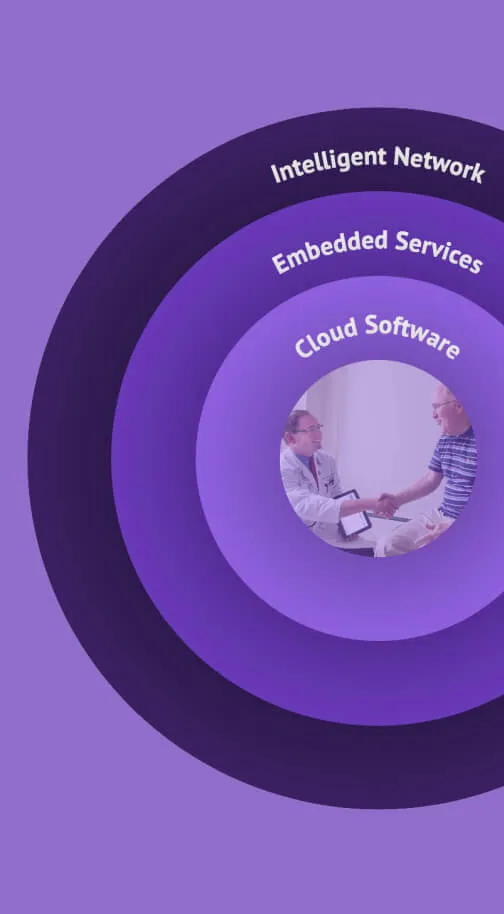Ever tracked your same day resolution rate? Here’s why you should.
Some clinicians close their patient encounters before leaving work for the day. Others find this work spilling over into “pajama time” that night, while still others let it ride until the next day—or later. Is it just a matter of individual working style and preference, or can a clinician’s chart completion times reveal something more about the administrative burden they face every day?
At athenahealth, we measure a clinician’s Same Day Encounter Close Rate, or SDECR, as a way to monitor how well we’re reducing administrative burden for their practice. This is one of several performance metrics we leverage as we help medical practices document more efficiently within athenaOne®’s electronic health record. This same day resolution rate works alongside metrics such as Average Documentation Time and Encounter Accelerator Usage to provide a full picture of clinician efficiency.
Same Day Encounter Close Rate is so important, in fact, that we’ve built it into our Clinical Efficiency Dashboard, a new tool released in Spring 2025 for athenaOne users. It’s the first time athenahealth has offered our customers a dashboard they can access at their convenience to understand and track EHR efficiency specifically. As they monitor these performance metrics, they can work with their dedicated Customer Success Manager to improve them.
So, how is Same Day Encounter Close Rate measured, and why is it valuable to know and optimize? Let us show you.
What is Same Day Encounter Close Rate?
Same Day Encounter Close Rate tracks how efficiently clinicians are able to complete clinical documentation within athenaOne. It is calculated based on the percentage of encounters that are fully documented and closed on the same day as the patient visit. This measure of same-day resolution indicates how well a healthcare provider is capturing all relevant details about a patient's care.
Today, SDECR shows what’s happening among the clinicians within a single practice. Eventually, it will tap into the power of the athenaOne network so clinicians can access benchmarks and best practices used by similar healthcare providers—and use them to improve their own chart completion time. Metrics are currently refreshed once a month, and plans are in the works to accelerate that to weekly or daily updates so that practices can have the most recent information possible and see right away which clinicians may need extra support.
How is a high same day resolution rate a sign of a healthy practice?
Efficient chart-closure rates among a practice’s clinicians are a positive indicator of a practice that is running smoothly. Instead of having a backlog of encounters to close, practices with high same day resolution rates are able to submit claims quickly and easily.
When a practice focuses on reducing chart completion time, it can see benefits like these:
- Reduced documentation backlog – These practices avoid delays in closing encounters and keep incomplete work from piling up.
- Improved clinician efficiency – Their clinicians aren’t bogged down with administrative tasks. The less time they must spend on charting, the more time they have for patient care.
- Enhanced revenue cycle performance – A practice cannot submit a medical claim until the encounter is closed. Faster documentation supports faster claims submission, processing, and reimbursements.
- Better patient care coordination – When up-to-date patient records are available in a timely fashion, it facilitates care coordination such as follow-ups and referrals.
- Regulatory compliance – Researchers at the University of Chicago Medicine have stated that closing ambulatory encounters is important because it impacts patient safety and regulatory compliance.1
When same-day resolution rate is neglected, it may be a sign of trouble at the practice, such as:
- Excessive documentation burden: When clinicians spend a significant amount of time documenting encounters, it can mean they have less time to focus on patient care.
- Data quality issues: Incomplete or inaccurate documentation can lead to billing errors and quality concerns.
- Clinician burnout: As “pajama time” increases, it can cut into work-life balance, a disruption which can contribute to a physician’s sense of burnout. The athenahealth 2025 Physician Sentiment Survey revealed that 64% of respondents felt they were spending too much after-hours time documenting care delivery, and 46% agreed that they feel burned out from work once a week or more.2
Researchers at KLAS Research have noted a correlation between chart closure rates and the clinician experience in general. As they put it, “The percentage of charts closed immediately after patient interactions is a simple measure of a complex idea: a provider’s ability to keep up with their workload.” They suggest that clinicians who report higher chart closure rates are more satisfied overall with their EHR and show lower levels of burnout.3
Key metrics and insights provided by Same Day Encounter Close Rate
A clinician’s Same Day Encounter Close Rate provides several valuable insights that, once known, can help drive better performance.
As a measure of efficiency, it tracks how quickly clinicians are finalizing their documentation, with a focus on whether key elements such as diagnoses, medications, and treatment plans are being captured in the chart. A high chart completion rate is crucial for accurate billing, quality of care assessment, patient safety, and compliance with regulatory standards.
SDECR can also help to identify documentation bottlenecks at the practice. It reveals those clinicians who may be struggling with documentation delays, so that they can be supported with targeted training and workflow improvements. (Incidentally, when customers flag these bottlenecks, it helps us at athenahealth improve our products for all users. In 2024, 38% of our product enhancements arose from customer feedback and requests.4)
For practices and clinicians interested in benchmarking and tracking performance, SDECR currently compares an individual’s documentation speed to averages within that practice, indicating who is working efficiently and which outliers may need support with their workflows. Future iterations of SDECR will allow clinicians and practices to compare their performance to their peers at other practices, and to benefit from best practices that athenaOne’s nationwide network of more than 160,000 clinicians5 can surface.
Factors affecting Same Day Encounter Close Rate
Having a high or low chart closure rate isn’t necessarily, or solely, a reflection of the clinician’s personal working style. Factors such as technology, training, and processes can affect chart closure rates, as can the nature of the clinical case itself. For example:
- Electronic health record (EHR) design: A user-friendly EHR system can enable efficient documentation. By contrast, an inefficient EHR can force clinicians to spend significant time on documentation and make it more challenging to close encounters the same day.
- Clinician training: When clinicians are properly trained in documentation guidelines and best practices, they can make the most of techniques that work. Without that training, they can struggle to complete their work the same day.
- Workflow optimization: Streamlined processes can reduce time spent on documentation. Processes that haven’t been optimized can leave some clinicians trailing others in efficiency.
- Clinical complexity: Complex cases may require more detailed documentation, affecting completion rates.
Improve practice performance, starting with same-day resolution rate
athenaOne’s Clinical Efficiency Dashboard gives our customers access to data-driven performance insights such as Same Day Encounter Close Rate that help them monitor and improve their performance. Reporting capabilities like these, combined with expert Customer Success Managers who review and coach practices one-on-one, are part of the athenaOne difference. Interested in learning how athenaOne helps practices like yours drive efficiency? Get in touch today to learn more about the Clinical Efficiency Dashboard and see a demo of athenaOne.
1. Westphal, W., & Street, J. (2021). Automating ambulatory open encounters reporting. Retrieved March 21, 2025 from https://hdsi.uchicago.edu/wp-content/uploads/2021/09/Open-Encounters-QSS-Poster_2021.pdf
2. 2025 Physician Sentiment Survey of 1,001 physicians nationwide. January 2025 fielded by Harris Poll, sponsored by athenahealth.
3. Manzione, Lauren, December 2020. Immediate Chart-Closure Rates. KLAS Research. Retrieved March 21, 2025 from https://klasresearch.com/archcollaborative/report/immediate-chart-closure-rates/355.
4. Based on athenahealth data as of Dec. 2024; M008
5. Based on athenahealth data as of Dec. 2024; M010













